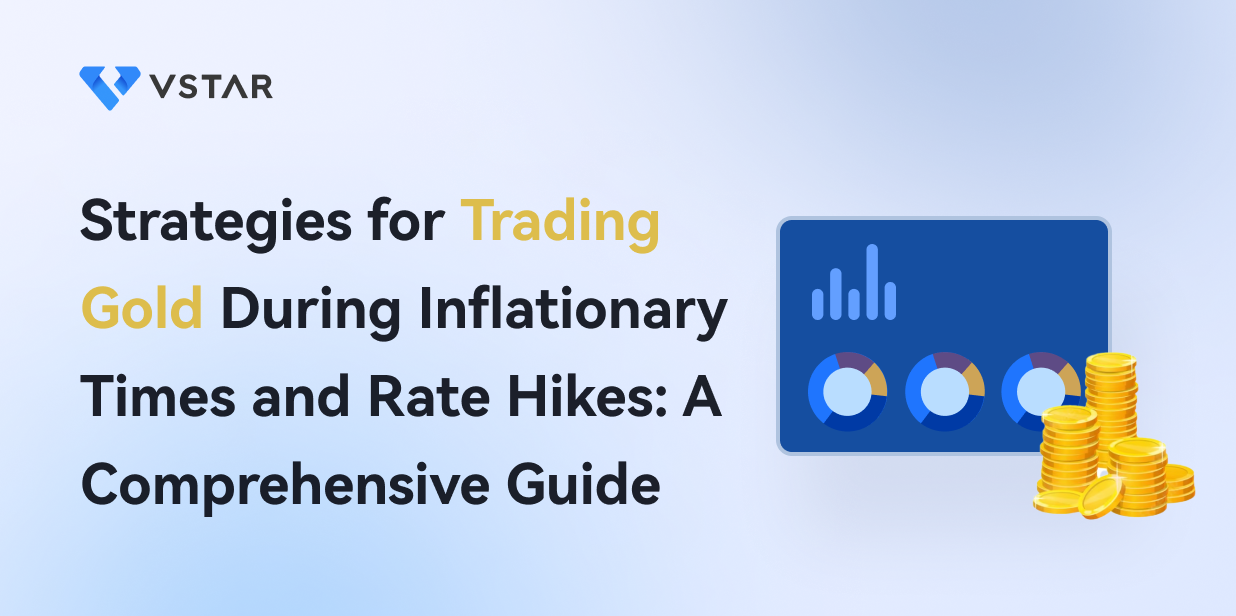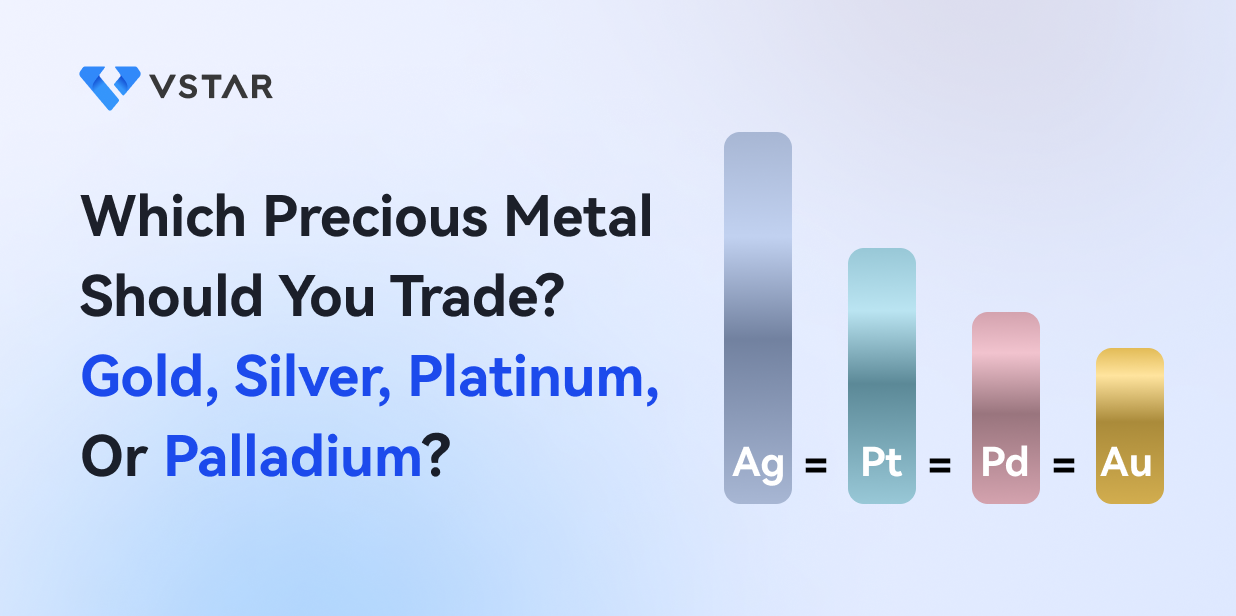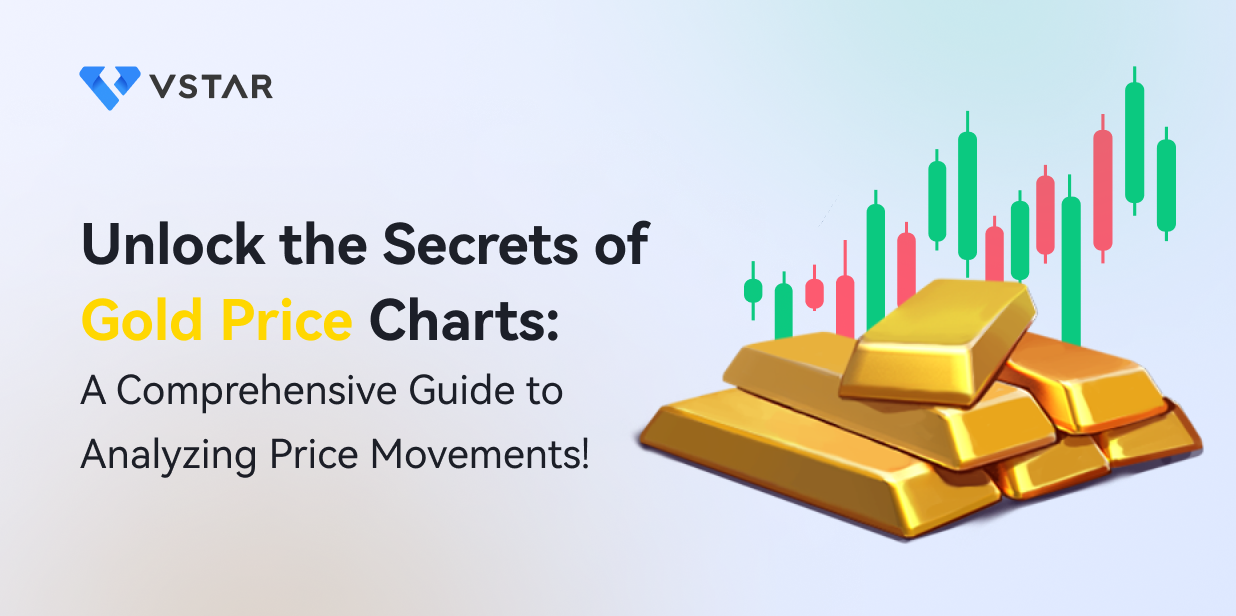Are you looking to capitalize on the dynamic gold market and take your CFD trading skills to the next level? In 2023, staying ahead of the curve is crucial as gold prices continue to experience fluctuations. By implementing advanced strategies, you can navigate this ever-changing landscape and potentially boost your profits.
In this article, we will explore effective techniques that blend fundamental and technical analysis to inform your trading decisions. Discover how to interpret global economic indicators, such as inflation rates and geopolitical events, which significantly impact gold prices. Learn how to leverage technical indicators, including moving averages and trend lines, to identify optimal entry and exit points.
1. Breakout trading
In the dynamic world of gold trading, mastering effective strategies is crucial to capitalize on potential market opportunities. One such strategy is breakout trading, which aims to identify and profit from significant price movements. Let's explore the steps involved in implementing this strategy for gold CFDs.
Breakout trading is an effective strategy for trading gold CFDs that can help you identify potential price movements and capitalize on them. In 2023, with the gold market experiencing significant fluctuations, understanding breakout trading techniques can be invaluable for your trading success.
Breakout trading involves identifying key levels of support and resistance on the price chart. When the price breaks above a resistance level or below a support level, it signifies a potential breakout. This breakout suggests a strong momentum in the market, presenting an opportunity for profitable trades.
How to identify potential breakouts in price
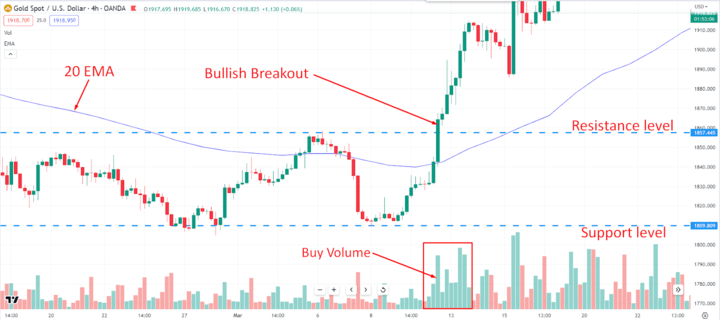
Image Source: Tradingview
To identify potential breakouts, you can use technical analysis tools such as support and resistance levels, moving averages, and chart patterns. These tools help you spot areas where the price is likely to break out and establish new trends. By paying attention to volume patterns accompanying the breakout, you can further validate its strength.
Placing trades in the direction of the breakout
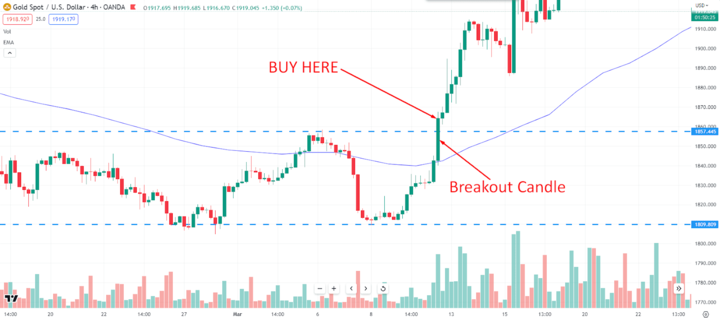
Image Source: Tradingview
Once you identify a breakout, you can place trades in the direction of the breakout. If the price breaks above resistance, you can open a long position, anticipating further upward movement. Conversely, if the price breaks below support, you can open a short position, expecting a downward continuation.
Setting stop loss and take profit orders
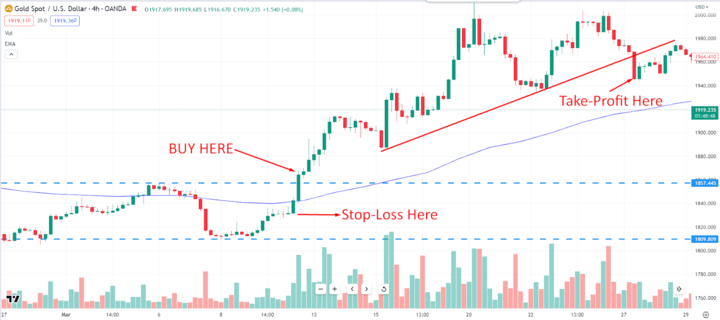
Image Source: Tradingview
Risk management is crucial when executing breakout trades. Set stop-loss orders to protect your capital in case the breakout fails and the price reverses. Take-profit orders allow you to secure profits by automatically closing your position when the price reaches a predetermined level.
2. Trend following
Trend following is a strategy that aims to profit from riding the momentum of existing trends in the market. It involves recognizing the prevailing direction of the trend, either upward (bullish) or downward (bearish), and aligning your trades accordingly.
To navigate the ever-changing landscape of gold trading, it's essential to adopt effective strategies that align with prevailing market trends. One such strategy is trend following, which involves identifying and capitalizing on established market trends. Let's delve into the key components of implementing a trend-following strategy for gold CFDs.
Identifying the direction of the trend
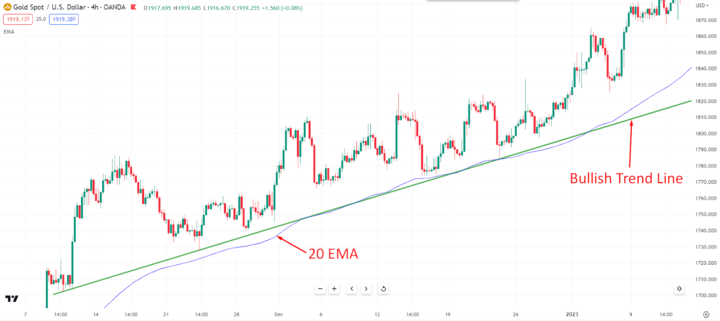
Image Source: Tradingview
To determine the direction of the trend, employ technical analysis tools such as moving averages, trend lines, or trend channels. Analyze price charts to spot higher highs and higher lows in an uptrend or lower highs and lower lows in a downtrend.
Using technical analysis to identify entry and exit points
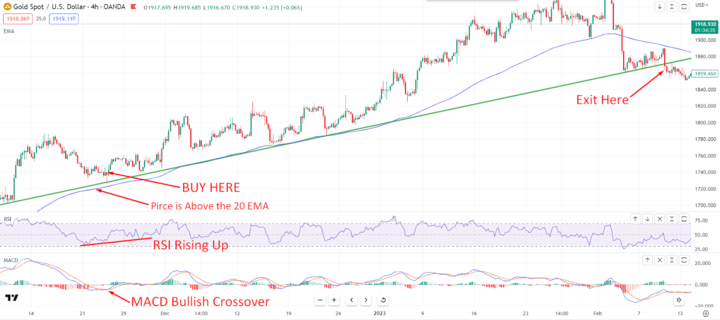
Image Source: Tradingview
Once the trend is identified, look for opportune moments to enter trades. This can be achieved by waiting for price retracements or pullbacks within the trend and entering trades when the price resumes its movement in the direction of the trend. Technical indicators like the Relative Strength Index (RSI) or the Moving Average Convergence Divergence (MACD) can provide further confirmation.
Managing risk through proper position sizing and stop loss placement
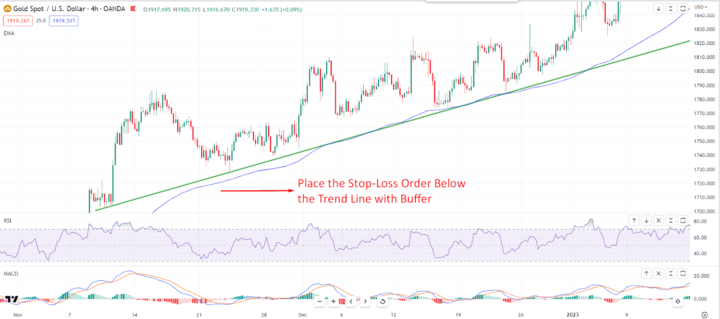
Image Source: Tradingview
Effective risk management is crucial in trend following. Determine your position size based on your risk tolerance and the size of your trading account. Place stop loss orders below support levels in uptrends or above resistance levels in downtrends to protect your capital in case the trend reverses.
By adopting a trend-following strategy, you can aim to capture substantial gains during extended price movements in the market. Stay updated with the latest economic and geopolitical developments that can impact the price of gold, as these factors may influence trends.
Remember that trend following requires patience, discipline, and a systematic approach. Avoid attempting to predict market reversals and focus on capitalizing on well-established trends. Regularly review and adjust your strategy based on evolving market conditions.
3. Scalping
When it comes to short-term trading strategies, scalping is a popular approach among traders aiming to capitalize on small price movements within a given timeframe. By executing multiple trades throughout the day, scalpers seek to accumulate profits from frequent market fluctuations. Here, we'll explore the key elements of implementing a scalping strategy for gold CFDs.
Placing multiple trades throughout the day
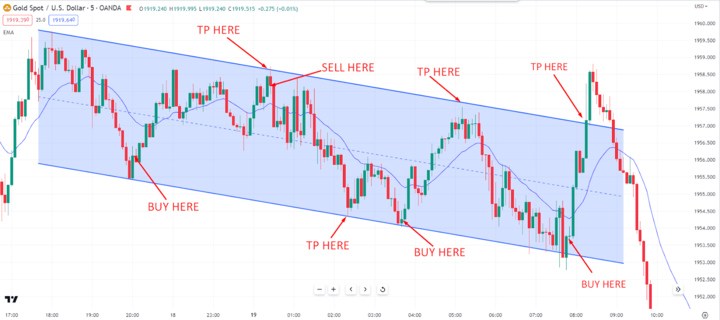
Image Source: Tradingview
By focusing on short timeframes, such as one-minute or five-minute charts, they can identify fleeting price movements and execute trades accordingly. It's important to stay disciplined and adhere to predefined entry and exit criteria to avoid impulsive decision-making.
Using technical analysis indicators such as charts and pivot points
Scalpers rely on technical analysis tools to identify potential entry and exit points. Charts, including candlestick patterns and trendlines, can provide insights into short-term price patterns. Pivot points, which highlight support and resistance levels, help determine optimal entry and exit positions for scalping trades.
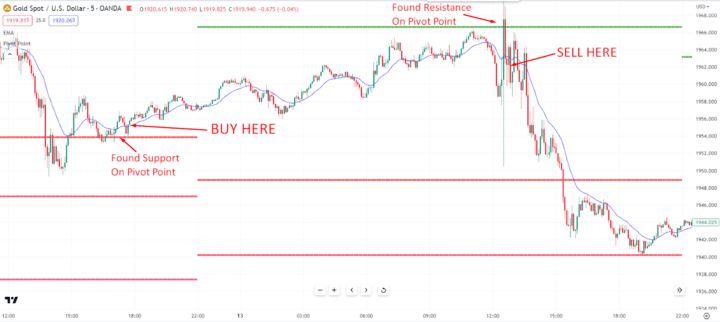
Image Source: Tradingview
Managing risk through proper position sizing and stop loss placement
Effective risk management is paramount in scalping due to the high frequency of trades. Scalpers typically limit their exposure by allocating a small percentage of their trading capital to each trade. Setting tight stop-loss orders helps mitigate potential losses and protect against adverse market movements.
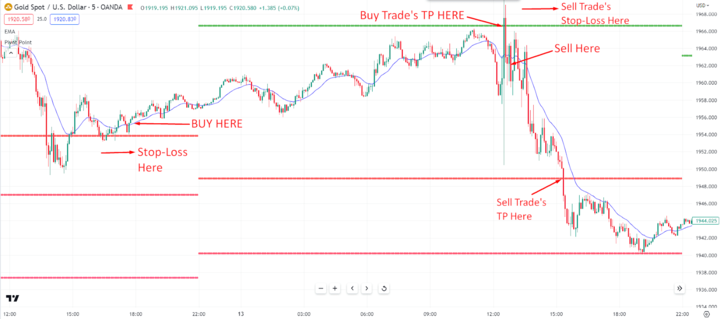
Image Source: Tradingview
In 2023, the gold market remains subject to various factors influencing its volatility and liquidity. Stay informed about macroeconomic events, monetary policy decisions, and geopolitical developments that can impact the price of gold. Scalping can be a suitable strategy for capitalizing on short-term price movements, but it requires swift execution and disciplined risk management.
4. Position trading
Position trading is a long-term strategy in which traders aim to capitalize on significant price movements by holding positions for an extended period. Unlike day traders or scalpers, position traders focus on capturing larger price trends rather than short-term fluctuations. Here, we will delve into the key elements of implementing a position trading strategy for gold CFDs.
Position trading involves taking a long-term view of the market, with trades typically held for weeks, months, or even years. Traders seek to identify and ride major price trends, aiming to benefit from substantial market movements. As a position trader, you have the advantage of capitalizing on major market trends and potentially reaping significant profits. By employing a position trading strategy, you can aim to capture substantial price movements in the gold CFD market. Keep in mind that this strategy requires a long-term perspective, disciplined decision-making, and ongoing monitoring of market conditions.
Holding a position for a longer period of time
Position traders are not concerned with short-term market noise. They aim to capture the broader price trajectory of gold over an extended duration. By avoiding frequent trading, position traders can reduce transaction costs and emotional biases associated with frequent decision-making.
Using fundamental analysis to identify trends and potential price movements
Fundamental analysis plays a crucial role in position trading. Traders analyze macroeconomic factors, geopolitical events, monetary policies, and supply-demand dynamics related to gold. These insights help identify long-term trends and potential price catalysts.
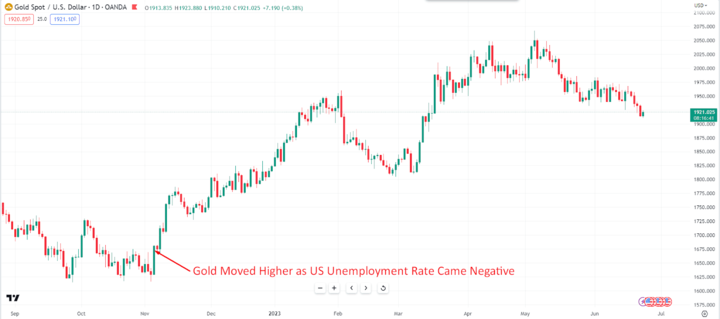
Image Source: Tradingview
Using technical analysis to identify entry and exit points
Besides, technical analysis is employed to fine-tune entry and exit points within the broader trend. Traders utilize tools such as moving averages, trendlines, and chart patterns to identify favorable entry levels that align with the overall trend. Additionally, technical indicators like the Relative Strength Index (RSI) and the Moving Average Convergence Divergence (MACD) can help confirm potential trade opportunities.
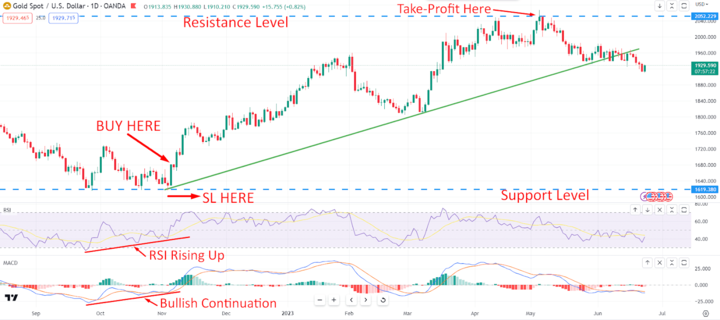
Image Source: Tradingview
This year the gold market continues to be influenced by global economic conditions, inflationary pressures, central bank policies, and geopolitical events. Stay updated on relevant news and reports to assess the long-term prospects of gold. A combination of fundamental and technical analysis can provide a comprehensive understanding of the market and help guide your position trading decisions.
Remember that position trading requires patience and the ability to withstand market fluctuations over an extended period. Develop a robust risk management strategy by setting appropriate stop-loss levels to protect against adverse price movements. Additionally, consider diversifying your portfolio by incorporating other asset classes to mitigate risk and enhance potential returns. Stay committed to your trading plan and continually assess the viability of your positions based on evolving market dynamics.
5. Hedging

Image Source: Unsplash
Hedging is a risk management strategy employed by traders to mitigate potential losses by using a combination of long and short positions. In the context of gold CFDs, hedging involves holding a long position in gold while simultaneously using other financial instruments, such as options or futures, to hold a short position. Let's explore the key aspects of implementing a hedging strategy for gold CFDs.
Using a combination of long and short positions
To implement a hedging strategy for gold CFDs, you would maintain a long position in gold CFDs to benefit from potential price appreciation. At the same time, you find that the market may retrace to the downside, and then you decide to hold the buy position and execute a sell trade. After some time, the market seems to be going downward, So, you close the buy trade with profit and continue the sell trade to get maximum profit.
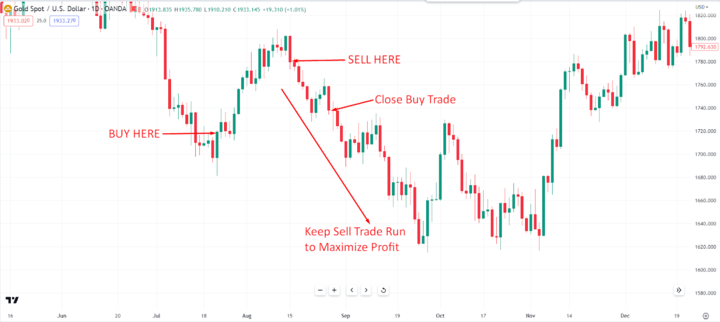
Image Source: Tradingview
Holding a long position in gold CFDs
The long position in gold CFDs allows you to participate in the potential upside movement of gold prices. This position benefits from price increases, providing a profit that can help compensate for any losses incurred in the short position.
Using other financial instruments

Image Source: Unsplash
To hedge against potential losses in the long gold CFD position, you would use other financial instruments, such as options or futures contracts, to take a short position. These instruments allow you to profit from price declines in gold. If the value of your long position decreases, the gains from the short position can help offset those losses.
It's important to note that hedging does not guarantee profits or eliminate all risks. It is a risk management technique designed to minimize potential losses. Proper position sizing and risk assessment are essential in hedging strategies. Additionally, consider transaction costs and the impact of market spreads when implementing hedging positions.
Employing a hedging strategy for gold CFDs will allow you to seek to reduce the impact of price volatility and protect your overall portfolio. However, it's crucial to thoroughly understand the mechanics and implications of the hedging instruments you utilize. Consult with a financial advisor or engage in thorough research to ensure that the hedging strategy aligns with your investment goals and risk tolerance.
Conclusion
Advanced trading strategies for gold CFDs can give you a deeper understanding of the market and enhance your trading skills. Whether you choose trend following, scalping, position trading, or hedging, it's crucial to adapt your approach based on the most recent information in 2023.

Image Source: Unsplash
By incorporating technical analysis, fundamental analysis, and risk management techniques, you can navigate the dynamic nature of the gold market more effectively. Remember to stay updated on market trends, news, and economic factors influencing gold prices.
Trading gold CFDs requires continuous learning and adaptation. As you gain experience and refine your strategies, you'll be better equipped to make informed decisions and maximize your trading opportunities.
Start applying advanced strategies to your gold CFD trading today and take advantage of this precious metal's potential opportunities. With dedication, practice, and a comprehensive understanding of the market, you can embark on a successful trading journey.

